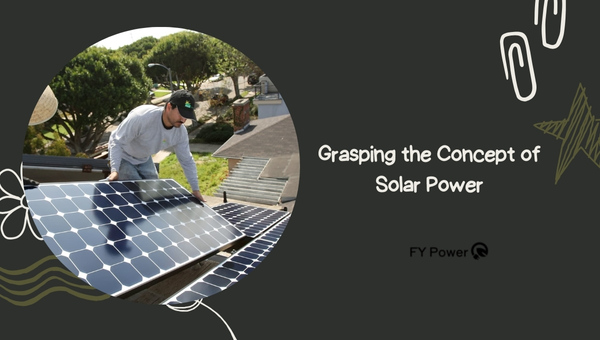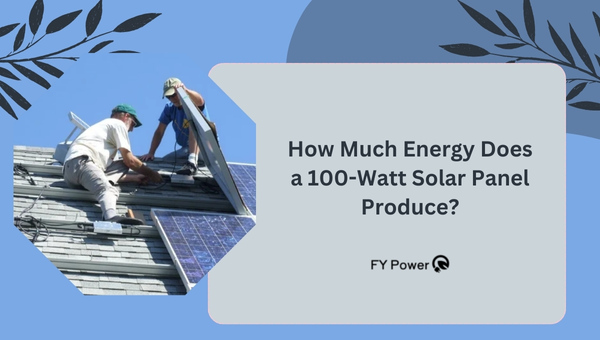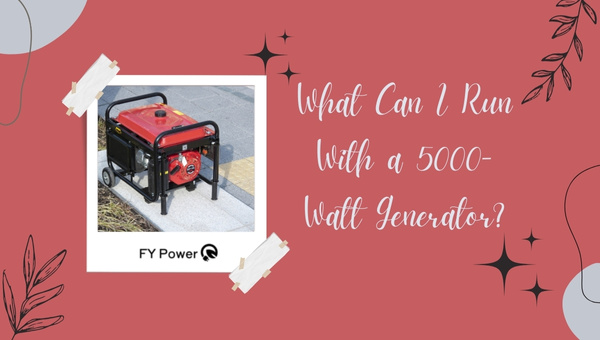When I think about harnessing the sun’s power, a few questions often pop up – one being, how effective are small solar panels? You’ve likely seen the compact panels with a “100-watt” label and wondered about their capability.
Well, I’m here to demystify 100-watt solar panel efficiency for you! Imagine having the sun as your silent partner in energy generation; it’s quite remarkable what a piece of silicon can do on a bright day!
A 100-watt solar panel is a small-scale energy magician. Under ideal conditions – think perfect sunlight and an optimum angle – this panel can churn out about 400 watt-hours or 0.4 kWh per day.
But remember, that’s under perfect conditions. The real world is full of unexpected twists, like passing clouds and less-than-ideal installations.
What You’ll Discover Here:
- Insights into the mighty but compact 100-watt solar panels
- Simple breakdowns of how these panels turn sunshine into electricity
- Realistic expectations for daily energy output
- Factors that make or break a solar panel’s performance
- Where you fit in with small-scale renewable energy sources
Grasping the Concept of Solar Power
Solar power is like magic from the sun. It turns light into electricity without making any noise or mess. Let’s talk about how that magic works.

When I think about how solar panels change sunlight into electricity, it’s quite a wonderful process.
Here’s how it happens in simple steps:
- Sunlight Hits the Panel: Each morning, the sun sends out light. This light has tiny packets of energy called photons.
- Photons Enter Cells: Solar panels have many small units called photovoltaic cells. Photons hit these cells and start their work.
- Energy Transfer Begins: Inside these cells, photons knock electrons free from atoms—a bit like balls hitting pins in a game of bowling.
- Electrons Move and Create Electricity: When electrons move, they make an electric current.
- Electricity is Captured: Metal plates on the sides of the cell grab this electric current and send it to wires.
- Power for Use: From there, electricity travels through these wires and is ready to power things in our homes or stored in batteries for later.
Every time I see a solar panel do this, I’m reminded that we’re capturing a piece of the sun’s power! It’s clean energy with no smoke or noise.
Basics of Solar Panel Efficiency
Efficiency in solar panels means how good they are at changing sunlight into usable electricity. To understand this better:
- Not All Light Converts to Electricity: Some light becomes heat instead—which doesn’t help power your television or fridge!
- High Efficiency = More Power: When panels are more efficient, more sunlight turns into electricity for your use.
- Panels Have Limits: Each panel can only capture so much light; not everything that hits it can be used.
- Best Conditions Matter: For panels to work their best, they need clear skies and the right angle towards the sun—like sunbathing, but for solar panels!
The efficiency part matters since we want as much power output as possible from each photon that hits our solar array.
In short, 100-watt solar panel efficiency tells us that under perfect conditions—a full sunny day with no clouds—the panel should give us close to 100 watts of power hour after hour while the sun shines down on it.
Solar panel efficiency means a lot when choosing which kind we buy because better efficiency can mean less space taken up on roofs and more savings over time!
Also Read: Honda GX160 Spark Plug Gap
Delving into 100-watt Solar Panels
When folks talk about solar power, there’s a lot of chat about watts and solar panel efficiency. But to really get it, we need to dive deep into what these things mean, especially when we’re focusing on 100-watt solar panels.
What Does 100 Watt Mean?
Now, let’s untangle this watt business. Simply put, when someone says a solar panel is “100 watts,” they’re talking about its power capacity — that’s like the strength of the panel.
It tells me how much electric power it can produce under ideal conditions in one sunny hour. So why does this matter? Well, it helps me figure out how many panels I might need for my house or camper.
- Think of it like buckets of water: If I have one bucket that holds up to 100 cups of water (that’s my 100-watt panel), and another bucket that holds only 50 cups (a smaller or less powerful panel), naturally, the bigger bucket can collect more water in the same amount of time.
- Not just any light: It needs direct sunlight, as bright and golden as the midday summer sun. On cloudy days, this “bucket” won’t fill up as much.
Significance-wise, knowing a panel is rated at 100 watts lets me compare apples to apples (or panels to panels) when shopping around or planning my energy needs.
Understanding Photovoltaic Cells
So, what are these photovoltaic cells that everyone keeps talking about? They’re the heart of the whole operation!
Photovoltaic cells — let’s call them ‘PV cells’ — are like tiny soldiers on the front line converting sunlight into electricity for us. Every single PV cell does its bit by taking beams from our good old sun and translating them to electric current. Here’s how they nail their job:
- Catch those rays: These cells catch light using layers of special materials (semiconductors like silicon).
- Get electrons moving: When sunlight hits these semiconductors, boom – it sends electrons hopping about.
- Harness the energy: That movement starts an electrical flow.
- Direct current (DC): Initially, what they make is DC-like battery stuff.
- Inverter action!: Since most homes need AC (alternating current), an inverter changes DC into something you can use at home.
Now imagine all these PV cells together on your roof as part of your own personal mini electric station! And if you choose wisely—that is, going for better quality—you’re getting much more work out of your troop of little sunshine warriors.
On your average bright day, with your shiny photovoltaic cells lined up neatly in a panel—all pegged at that magic number: ‘100 watts’—you’ve got yourself quite the powerhouse!
Boldly giving us clean energy every sunny second without so much as a peep—that’s kinda their superpower!
And did I mention this happens silently? No fuss compared to generators or other noisy gadgets! It’s just silent sunshine-turned-electricity gold!
The bottom line here is that PV cells are small but mighty, turning what literally falls from the sky into usable juice for all our electronic gadgets!
Also Read: What will a 6500 watt generator run?
How Much Energy Does a 100-Watt Solar Panel Produce?
Ever wondered about the power of a single solar panel? I’ve found that many people are curious about how efficient small solar panels are. So, let’s dive into the workings of a 100-watt panel.

Calculating Daily Power Output
When I try to figure out how much energy a 100-watt solar panel makes every day, I think about the perfect day with lots of sun.
Here’s how I do the math:
- Peak Sun Hours: This means how long the sun’s power is strong enough to be counted as full sun. Let’s say we get about 4 peak hours on an average day.
- Panel Wattage: The panel is made to make up to 100 watts of power.
- Math Time: Multiply those peak sun hours (4) by the watts (100). So, it goes like this: 4 hours x 100 watts = 400 watts.
- This means under good conditions, the panel can make roughly 400 watt-hours of energy in one day.
Now, that sounds good, but it’s just a rough idea.
Factors Affecting a 100-Watt Solar Panel Efficiency
Not every day is perfect, though. Different things change how much power that solar panel can really make:
- The Way It Faces: If the panel isn’t facing right where the sun crosses the sky, it won’t get as much light.
- How Much Light There Is: On cloudy days or when something shades your panel even for a bit, it won’t get all the light it needs.
- Temperature Things: Panels like it cool, not hot! So, on very warm days, they might not work as well.
- The Place You Live: Near Poles? More daylight in summer! But less in winter, too!
- The Panel Itself: Some panels are better at catching light than others.
All these can add up and mean you’re getting less than those nice “400-watt-hours” from above.
And don’t forget – other hardware bits like wires and batteries also lose some energy along the way!
Understanding all this helps me really see what my little solar friend can do – or what limits its super sunny powers!
Real-World Applications for a 100-Watt Panel
When I think about 100-watt solar panels, the first thing that comes to mind is their convenience. They’re not too big or too small, making them a great choice for a lot of different uses out in the real world. Let’s take a closer look at where these handy panels shine.
Common Uses for Small-Scale Panels
Now, you might be wondering, “Where would I even see a 100-watt solar panel?” Well, let me tell you:
- RVs and Camping: Many people love to hit the road in their RVs or set up camp in remote areas. With a 100-watt solar panel, they can keep their batteries charged up without needing to hook up to an electricity source.
- Boats: On the water, power sockets are pretty hard to come by! Boat owners use solar panels to maintain battery life and power small appliances while they’re enjoying life at sea.
- Remote Cabins: If you’ve got a cabin off the grid where power lines don’t reach, these panels are perfect for powering things like lights and charging your phone.
- Backyard Sheds: For those who spend time tinkering or gardening in their backyard sheds, having one of these panels means you can have light and power tools without running extension cords all over the place.
- Portable Power Stations: When disasters strike or when you’re working at outdoor events without direct power access, 100-watt panels connected to portable power stations can be real lifesavers.
Feasibility & Limitations
While I’d love to say that 100-watt solar panels are perfect for everything, that just isn’t true. They have their strengths and weaknesses based on what you need them for:
- Single Panel Feasibility:
- Perfect For Small Tasks: Charging batteries, powering LED lights, or running small appliances.
- Great For Travel: Easy to pack and move around if your energy needs aren’t massive.
- Multiple Panels Setup:
- Expanding Power Capacity: When one isn’t enough but still wants portability? Hook up several together!
- Flexible Configurations: Some setups allow adding more later as needed, which is super handy.
- Limitations:
- Not Ideal for Big Appliances: Don’t expect one panel alone to run heavy-duty machinery; it’s just not going to happen.
- Weather Dependent: Cloudy days? Short winter days? These factors will reduce your panel’s effectiveness.
In simpler terms? A single 100-watt panel is great if your energy needs are modest—think charging gadgets or keeping some lights on while camping. But if we’re talking about running an air conditioner or heating unit full-time—nope! You’ll need way more solar amps than what this can offer.
FAQs
How long does a 100-watt solar panel take to charge a battery?
The time it takes for a 100-watt solar panel to charge a battery depends on the battery’s capacity and state of discharge. Roughly, it could take about 5-8 hours for a full charge on a sunny day.
How can I increase my solar panel’s efficiency?
You can improve your solar panel’s efficiency by keeping it clean, positioning it correctly to capture maximum sunlight, reducing shade, and using trackers or reflectors if possible.
What happens to my solar power output on cloudy or rainy days?
On overcast days, solar panels will still produce energy but at reduced efficiency. The output can drop to 10-25% of its capacity compared to bright, sunny conditions.
Conclusion
In wrapping up our journey through the intricate world of solar energy, specifically focusing on the 100-watt solar panel efficiency, I’ve delved deep into how these panels work and how their efficiency can be influenced by various factors.
It’s clear that while a 100-watt panel might seem modest, it certainly packs a punch when it comes to its capabilities in the right conditions.
Key Takeaway Points:
- 100-watt panels, though small, are mighty in energy production.
- Efficiency is key; understanding it helps maximize output.
- Environmental factors greatly affect solar panel power yield.
- These panels have diverse applications, perfect for RVs and other small appliances.
- Evaluating needs versus output is essential when considering these solar solutions.

